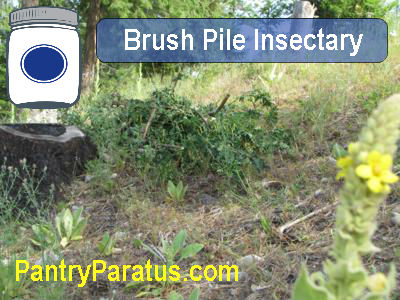Brush Pile
Stacking functions for beneficial insectary habitat
If you live long enough in a woodland area, you are going to have to cut something which will inevitably yield a brush pile. I am an amateur apiculturalist (bee keeper), so I take my local habitats pretty seriously. We avoid using insecticide sprays or dusts, and we like to plant things that attract bees.
I ended up having to trim some branches from a bush to clear a sidewalk pathway yielding brush to pile. I decided I would create a brush pile habitat (the best that I could) on a southwest facing slope that gets great afternoon sun. The spot I chose was just above an old stump so the water would naturally collect there forming a type of swale. As a bonus, the tree was in the process of forming these seed pods, so perhaps with all of the seed pods, one of them can take root and start a new bush.
Although I am partial to honeybees (after all I am married to a bread baker), there is a whole world of solitary bees that are great pollinators. Bees are generally a sign of health and vitality on a piece of land (i.e. “land flowing with milk and honey” Exodus 3:8 NIV). Generally things that flower and bear fruit require a lot of symbiosis; so much of this is only possible with pollinators. So if you like beauty and you like to eat, take care of the pollinators.
I had heard on a Paul Wheaton podcast about the value of brush piles for insectary habitat. Actually, here is an excellent worksheet for evaluating beneficial insectary habitat on a piece of land. Sure some of that brush could have been used to stoke the camp fire, but once it goes up in smoke, there is little benefit left. What was once waste (i.e. brush) can actually become an input to develop further life and growth on your homestead. I think that Crown Bees has some great information on developing bee habitat and the homesteader’s new best friend, the solitary bee.
To do this I used a pair of loppers and the trusty rusty wheelbarrow with the solid front tire.
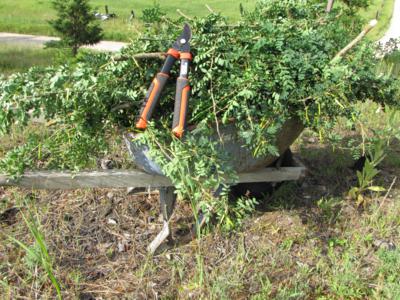
I found the spot by the stump on the slope I wanted to start my insectary. I found a few sticks to insert into the ground (on contour) to hold the brush in place.
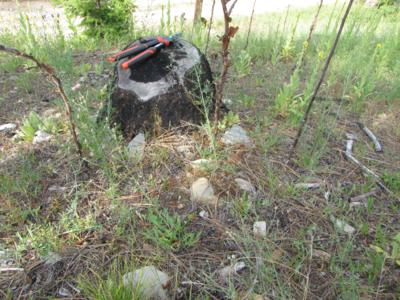
Next, I formed the brush pile habitat by layering the freshly cut brush with seed pods and some old lumpy dry sticks to add texture. There really is not a whole lot that you can do wrong here on this step.
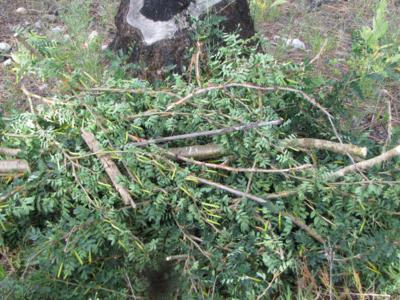
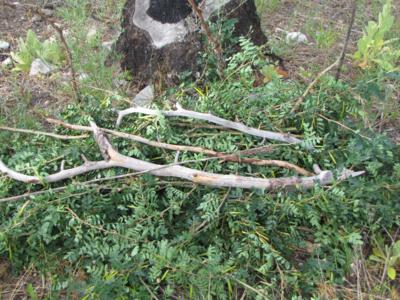
My end product looked like this (as seen from the side). Notice that it is on the uphill side to help slow the water down and feed the seeds that will hopefully develop there into a new bush.
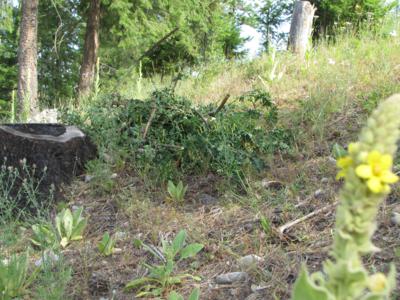
Can a waste product develop further life on your homestead? Yes, it can. I hope that you see the benefits of the simple brush pile. I found this other great article on brush pile fostering, I hope it helps to inspire you to stack functions and create life on your homestead.
Wilson
Pro Deo et Patria
Photo Credits:
All Photos by Pantry Paratus

